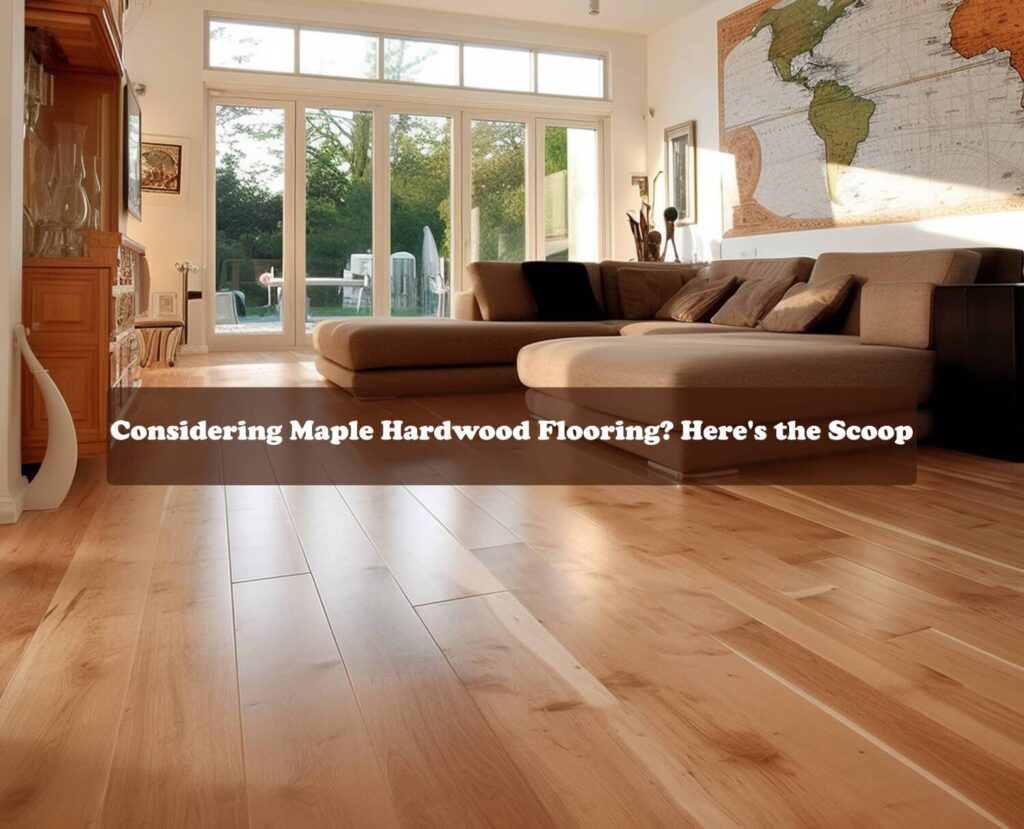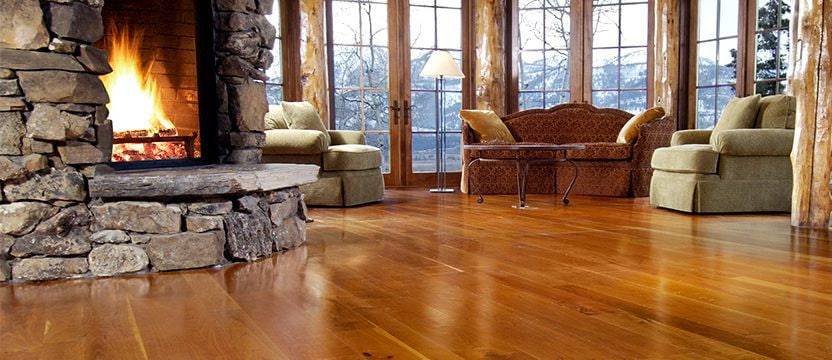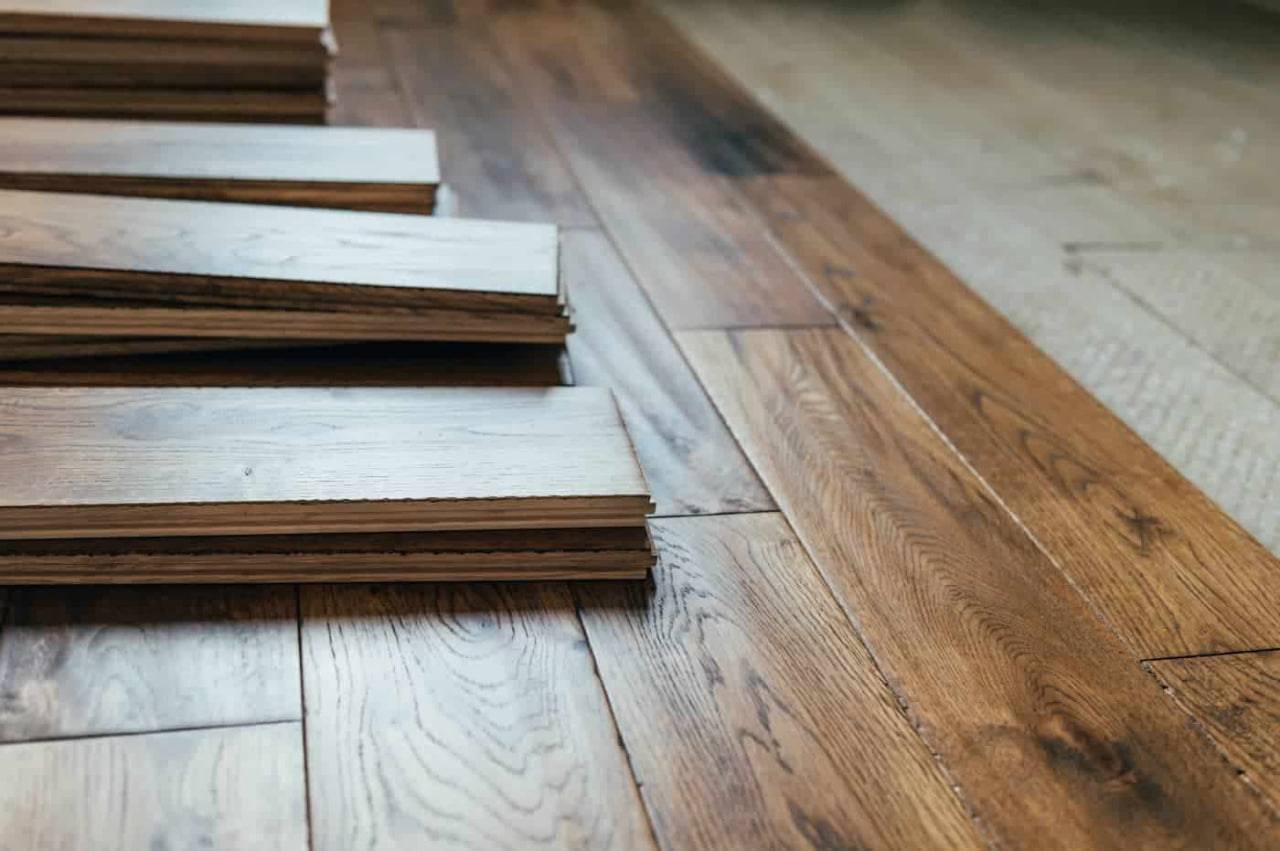Love light, airy interiors with a touch of nature? Maple hardwood Flooring might be your perfect match. Renowned for its warm glow, subtle grain, and impressive durability, it’s no surprise this wood graces countless homes. Whether you’re drawn to modern minimalism or timeless elegance, maple’s clean, consistent look effortlessly elevates any space.
Step into Nature with Maple Hardwood Flooring:
Made from sustainably sourced maple trees in North America, maple hardwood flooring offers both the charm of natural wood and the practicality of a solid or engineered construction. Its creamy white shade, sometimes deepening to a light brown, creates a warm and airy feel, perfectly complementing modern or traditional spaces.
Unlike other woods boasting bold grain patterns, maple’s beauty lies in its subtle elegance. This fine, almost unnoticeable grain creates a smooth, consistent surface that reflects light beautifully. Don’t underestimate its strength, though! Maple’s exceptional density makes it incredibly hard and durable, perfect for areas with high traffic or active families.
Before You Decide:
While maple excels in hardness and sustainability, there are a few points to consider. Its light tone makes scratches more visible, and it doesn’t hold stain as well as other hardwoods. Additionally, sharp fluctuations in humidity can affect maple flooring, so stable climate control is a must.
Maple Hardwood Flooring: Pros and Cons
Pros:
- Durability: One of the hardest woods used for flooring, maple is super resistant to dents, scratches, and wear and tear. Great for high-traffic areas and active households.
- Light and airy: The creamy white color with its subtle grain pattern opens up and brightens spaces, making them feel larger and more inviting.
- Easy maintenance: Sweeping and occasional damp mopping with gentle cleaners are all it takes to keep it looking good.
- Sustainable: As a fast-growing domestic wood, maple is an eco-friendly choice with lower environmental impact.
- Modern and versatile: The clean, consistent look complements both modern and traditional styles, seamlessly integrating with various design schemes.
- Moderately priced: Compared to other exotic hardwoods, maple falls within a mid-range price category, offering good value for money.
Cons:
- Susceptible to scratches: While highly durable, the light color makes scratches more visible, requiring greater care.
- Limited color options: Primarily available in lighter shades, maple doesn’t accept stains well, making darker color preferences challenging to achieve.
- Sensitive to humidity: Fluctuations in moisture levels can cause warping and cupping, requiring consistent climate control.
- Not ideal for pets: Scratches from claws can be more noticeable on the smooth surface.
- Lacks bold grain: If you desire a pronounced wood grain pattern, maple’s subtle grain might not be visually appealing.
Ultimately, the choice between maple and other hardwoods depends on your priorities and specific needs. If durability, sustainability, and a light, airy aesthetic are important, maple is a strong contender. However, if you prefer darker colors, a pronounced grain pattern, or have pets, other options might be more suitable.
Maple Hardwood Flooring: Installation Tips for a Flawless Finish
Installing maple hardwood floors requires extra attention due to its unique properties. Here’s what you need to know for a smooth and long-lasting result:
- Acclimation is Key: Unlike most wood floors, maple is particularly sensitive to humidity. Give it 48-72 hours to adjust to the room’s climate before installation. Keep it unboxed and stacked with spacers for proper airflow.
- Reclaimed Charm: Consider using reclaimed maple from old gyms or bowling alleys! It often offers unique character and contributes to sustainable building practices.
- Sanding Expertise: Maple’s hardness and tight grain make sanding a challenge. Leave it to professionals! They’ll know how to use lower settings and avoid imperfections caused by sander movement.
- Natural Beauty Shines: Achieving a uniform stain on-site can be tricky. Embrace the natural beauty of maple by opting for a clear coat instead. Most high-quality maple floors come pre-stained anyway.
Bonus Tip: Consult the National Wood Flooring Association (NWFA) for detailed installation guidelines and professional recommendations.
By following these tips, your maple hardwood floor will become a stunning and durable addition to your home.
Choosing Your Dream Floor: Maple vs. White Oak vs. Ash
Picking the perfect wood floor involves balancing style and practicality. To help you decide, let’s compare Maple, White Oak, and Ash:
Color:
- Maple: Creamy white to light brown, offering a bright and airy feel.
- White Oak: Golden brown to gray, showcasing warmer tones and richer variations.
- Ash: Light tan to dark brown, with striking contrasts between heartwood and sapwood.
Stainability:
- Maple: Absorbs stain unevenly, best left natural or clear-coated.
- White Oak: Takes stain well, ideal for achieving darker shades.
- Ash: Stains well, but often left natural for its unique grain patterns.
Hardness:
- Maple: The hardest of the three, highly resistant to dents and scratches.
- White Oak: Softer than maple, but scratches show less due to its grain.
- Ash: Moderately hard, resilient to everyday wear, but susceptible to deeper scratches.
Cost:
- Maple: Moderately priced, falling in the middle range.
- White Oak: Similar price to maple, offering greater availability.
- Ash: Slightly more expensive than maple, depending on the specific variety.
Additional Considerations:
- Maple: Sensitive to humidity changes, requiring careful acclimation.
- White Oak: More forgiving with humidity fluctuations.
- Ash: Prone to insect damage, requiring preventative measures.
Tip: For the ultimate durability and light aesthetic, maple shines. If richer tones and easier stainability are your priorities, consider white oak. For a bold grain with versatility, ash might be your match. Remember, hardness varies within each species, so research specific subtypes.
Ultimately, the perfect choice depends on your individual needs and preferences. Weigh the pros and cons carefully to find the floor that complements your style and lifestyle!
Maple vs. Ash: Unveiling the Subtle Differences
Looking for light, airy hardwood floors? Both maple and ash are strong contenders, but subtle differences might sway your decision. Let’s delve into their unique characteristics:
Appearance:
- Maple: Creamy white to light brown, boasting a smooth, almost grainless surface for a clean, modern aesthetic.
- Ash: Similar light tones, but with a distinct and subtle light grain that adds textural interest. Stain takes well, highlighting the grain further.
Durability:
- Maple: Champion of hardness, resisting dents and scratches like a boss. Ideal for high-traffic areas.
- Ash: Moderately hard, still resilient to everyday wear but more susceptible to deeper scratches.
Availability:
- Maple: Widely available, offering plenty of choice and affordability.
- Ash: Less common, potentially limiting your selection and often slightly more expensive.
Choosing Your Match:
- Prefer a minimalist, pristine look and prioritize extreme durability? Maple wins.
- Desire a touch of grain for visual interest and appreciate wider stain options? Ash beckons.
Bonus Tip: If you like maple but crave a hint of texture, consider a wire-brushed finish that highlights subtle grain variations without losing its light charm.
Keeping Your Maple Floor Flawless: Maintenance Must-Knows
While stunningly beautiful, maple floors do require some special care to maintain their pristine look. Here’s what to remember:
Protecting from Scratches:
- Embrace rugs: Strategically placed runners and area rugs shield high-traffic areas and minimize visible scratches.
- Mind your footwear: Encourage guests to remove shoes, especially heels, to prevent surface damage.
Maintaining Clarity:
- Dryness is key: Skip the wet mop! Opt for regular sweeping with a soft broom and occasional dry mopping for dust removal.
- Embrace microfiber: Microfiber cloths trap dirt effectively without leaving moisture behind.
Combating Humidity Fluctuations:
- Humidity check: Invest in a hygrometer to monitor your home’s humidity level. Aim for 35-55% for optimal floor health.
- Climate control: Utilize a humidifier in dry seasons and a dehumidifier in humid periods to maintain consistent humidity.
- HVAC integration: Consider whole-home humidification systems for year-round control in extreme climates.
Bonus Tip: Regularly clean spills and messes immediately to prevent staining and water damage.
Maple’s Delicate Side: Protecting Your Light & Lovely Floors
While maple floors charm with their light, airy aesthetic, maintaining that pristine look requires special attention. Here’s what to keep in mind:
Scratch Slayers:
- Area rugs: Embrace them! Place runners in high-traffic areas and strategic rugs near doorways to shield your floor from scuffs and scratches.
- Shoe etiquette: Encourage guests to leave their shoes at the door, especially heels, to prevent unwanted marks.
Keeping it Clean & Clear:
- Ditch the damp mop: Stick to dry cleaning methods! Regular sweeps with a soft broom and occasional dry mopping with a microfiber cloth effectively capture dust and debris without leaving water residue.
- Lightness on its side: Remember, maple’s light color means dirt can be more noticeable. Frequent cleaning becomes your ally in maintaining its bright look.
Humidity, the Hidden Foe:
- Moisture matters: Invest in a hygrometer to monitor your home’s humidity. Aim for a sweet spot between 35-55% for optimal floor health.
- Climate control: Utilize a humidifier in dry seasons and a dehumidifier in humid periods to maintain consistent moisture levels.
- Think long-term: Consider integrating a whole-home humidification system into your HVAC for ultimate control in extreme climates.
Summary: Maple Hardwood Flooring – Beauty With Practical Considerations
Maple hardwood is a popular choice for its light, airy aesthetic and impressive durability. However, it has some specific needs to maintain its beauty.
Pros:
- Durable: Excellent resistance to dents and scratches, perfect for high-traffic areas.
- Light and airy: Brightens spaces, ideal for modern or traditional styles.
- Easy maintenance: Sweeping and occasional dry mopping suffice.
- Sustainable: Fast-growing domestic wood with low environmental impact.
- Moderately priced: Offers good value compared to other hardwoods.
Cons:
- Susceptible to scratches: Light color makes scratches more visible.
- Limited color options: Primarily available in lighter shades, doesn’t stain well.
- Sensitive to humidity: Requires stable climate control to prevent warping.
- Not ideal for pets: Scratches from claws can be noticeable.
- Lacks bold grain: Might not appeal if you prefer a pronounced wood grain pattern.
Maintenance Tips:
- Use runners and area rugs to protect from scratches.
- Clean with dry methods like sweeping and microfiber mopping.
- Monitor and maintain consistent humidity levels (35-55%).
- Promptly clean spills to prevent staining and water damage.
Alternatives:
- White Oak: Richer tones, easier to stain, but softer than maple.
- Ash: Similar light tones with subtle grain, good stainability, moderately hard.
Ultimately, the best choice depends on your priorities and needs. If durability, sustainability, and a light look are key, maple is a strong contender. Consider other options if darker colors, pronounced grain, or pet-friendliness are important.
FAQs about Maple Hardwood Flooring
Is maple hardwood flooring easy to scratch?
While very durable, the light color of maple makes scratches more visible. Using rugs and encouraging guests to remove shoes can help minimize them.
Can I stain maple hardwood floors?
Maple doesn’t absorb stain evenly, so it’s best left natural or clear-coated. Pre-stained options are available, but achieving a uniform stain on-site can be challenging.
Is maple hardwood flooring sensitive to humidity?
Yes, fluctuations in humidity can cause warping and cupping. Invest in a hygrometer and use humidifiers/dehumidifiers to maintain consistent moisture levels (35-55%).
Is maple hardwood flooring good for pets?
While durable, pet claws can leave noticeable scratches on the smooth surface. Consider other options if you have pets that roam freely.
Is maple hardwood flooring expensive?
Maple falls within a mid-range price category compared to other hardwoods. It’s more affordable than some exotics but slightly more expensive than ash.
How do I clean maple hardwood flooring?
Avoid wet mops! Regular sweeping with a soft broom and occasional dry mopping with a microfiber cloth are sufficient. Promptly clean spills to prevent staining.
Where can I learn more about maple hardwood flooring?
The National Wood Flooring Association (NWFA) offers detailed installation guidelines and professional recommendations. Consult flooring specialists for specific advice tailored to your needs.




